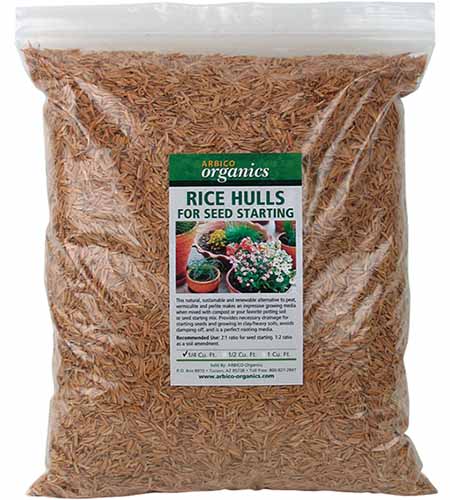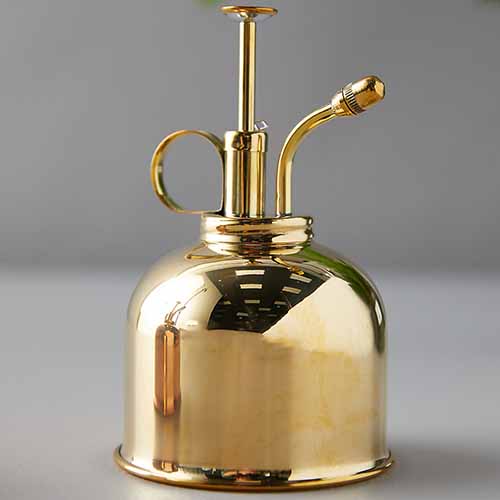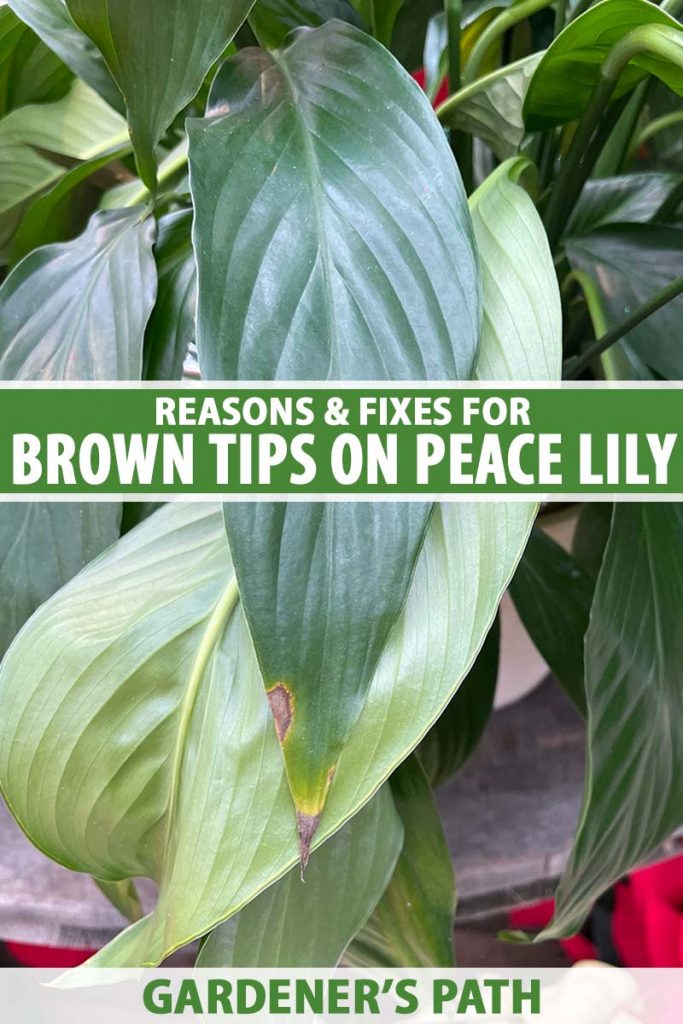Many of us love peace lilies (Spathiphyllum spp.) for their stunning white flowers, but even when they’re not in bloom, these houseplants are remarkably beautiful.
I’d grow peace lilies even if they didn’t bloom – those glossy, elegant green leaves are pretty irresistible.
That is, unless the foliage starts to look less than stellar, which can happen when the tips of the leaves turn brown, a fairly common occurrence.


We link to vendors to help you find relevant products. If you buy from one of our links, we may earn a commission.
There are a number of reasons that may cause the leaf tips to turn brown, and in this guide we will go over the most common ones.
Here’s what we’ll discuss:
5 Causes of Brown Leaf Tips on Peace Lilies
Peace lilies are tropical plants that hail from warm, humid areas of Mexico, South America, and Southeast Asia. They do best in a location with bright, indirect light, temperatures between 60 and 85°F, and at least 50 percent humidity.
That said, they’re pretty robust and they can survive just fine if the temperatures wander out of this range or if your home’s humidity levels leave something to be desired.
However, when conditions are less than ideal, the tips of the leaves might start to turn brown. Unfortunately, once this happens, the tips won’t turn green again.
If you don’t like the appearance of the brown tips, you can either trim off the entire leaf, and wait for new foliage to replace it, or snip off just the tips.
Let’s take a look at five top reasons for brown leaf tips and get your peace lily back on track.
1. Moisture Stress
A common cause of brown tips on peace lilies is problems with hydration.
Too Much Water
Plants that receive too much water aren’t able to access the oxygen they need. The roots absorb oxygen from the air spaces in the soil, and if the soil is oversaturated, your peace lily’s roots can’t breathe.


It’s easy to assume that if oversaturated soil is the problem, all you need to do is water less frequently, but that might not be the solution.
A plant can also be overwatered if the soil doesn’t drain quickly enough, or if it is growing in an excessively large container. Peace lilies tend to do better when they are slightly root bound rather than growing in a pot that is too large.
The reason for this is that it’s difficult to provide enough water to the plant without oversaturating the surrounding soil. The extra soil in a large pot holds water and is slow to drain, causing the roots to sit in consistently soggy soil.
The top inch of soil should be allowed to dry out between waterings, but that isn’t always a reliable indicator. Sometimes the soil below the top inch can remain extremely moist even as the top dries out.
Use a soil moisture meter to test the soil in the bottom half of the pot as well. You can add water when the meter indicates that the soil is on the dry side.
If you’re having trouble maintaining the right moisture level, consider repotting into a smaller container, if yours is too big, or repotting in soil with added perlite or rice hulls. This will help to improve drainage while still retaining water.


Rice Hulls
You can pick up a quarter-, half-, or one-cubic-foot bag of rice hulls at Arbico Organics.
Poor Drainage
If the container has poor drainage, even if you are offering your plant the right amount of water it’s likely that the roots are sitting in oversaturated soil for far longer than they should.
There are a lot of pretty containers out there that lack drainage holes, and I know how tempting it is to select one of these for your peace lily. Trust me, I’ve tried to get away with growing houseplants in solid containers more times than I care to admit.
In the long run you really are better off with a container that has at least one drainage hole in the bottom. Alternatively, you can use a well-draining container tucked inside a decorative cachepot.


Even if your pot does have one or more drainage holes, check to make sure they aren’t blocked. Just stick your finger or a chopstick up there and move it around. If you encounter resistance, remove the plant from the container and see if it is root bound. In this case, loosen the roots and repot in a slightly larger container.
If you don’t need to go up a pot size, remove any rocks and loosen any clumps of soil that might be blocking the drainage hole before replacing the plant in the same pot.
In addition, after watering, always empty any saucer, pot, or other catchment at the base of the container.
Too Little Water
Too little water is just as much of a problem for your peace lily as oversaturation.
Deprived of the moisture it needs, the plant will become stressed, which can cause dry, crisp leaf tips. If you see drooping or wilting along with the browning tips, you can be fairly confident that too little moisture is the problem.


This problem develops after repeated underwatering or allowing the plant to become dehydrated, so don’t feel bad if you underwater your plant occasionally. Just take care to check the top inch of soil every few days and add water when it feels dry.
If you feel like the soil is drying out too quickly, try working some rice hulls or perlite into the potting medium.
A Note on Bottom Watering
Bottom watering can be an effective way to hydrate your plants, but this method can also result in a buildup of sodium in the soil. When you water from above, sodium is flushed out as the water drains through the potting medium.
If you do use the bottom watering technique, make sure that you water your plants from above every fourth or fifth time to flush out any excess sodium.
Give the soil a good, deep soaking and then dump the catchment saucer after 10 minutes and again in another 30 minutes, if necessary. If you do this regularly, it should be enough to keep the sodium from building up in the soil.
To further prevent an excess of sodium in the soil, never water with softened water, and refresh the soil in the container every few years.
Learn more about how to water your peace lily in our guide.
2. Temperature Extremes
Peace lilies generally aren’t fussy, but like all types of plants they require a specific temperature range to survive and thrive.
These plants do love a nice, toasty environment – but there can be too much of a good thing. Conversely, they will suffer if it becomes too cold (I know how they feel).


Consistent temperatures above 80 and below 65°F can cause the plant to become stressed, and the leaves to start turning brown at the tips.
If it’s too hot, the solution is to either move your plant to a cooler location away from windows with direct sun exposure, or crank up the AC during heatwaves.
Be sure to keep plants away from heat vents during the winter, as well. Not only is it hot near the vents, but the forced air dries out the foliage and soil more quickly.
If the temperatures are too cold, it’s a good excuse to turn up the heat during the winter, though you don’t have to rely on heat alone. Consider moving the plants away from windows or doorways, and don’t leave them near an AC vent in the summer.
3. Lack of Humidity
Peace lilies come from tropical areas that are warm and humid. If they don’t receive the humidity that they’ve evolved to thrive in, the tips of the leaves may turn dry and brown.
Fortunately, there are lots of ways to increase humidity. You can move your plant to the bathroom so it can enjoy the heat and moisture of your daily shower, or group a collection of houseplants together so they can raise the humidity level around them.
An easy way to increase humidity around your plant is to use a tray filled with pebbles and water. Place the plant on the tray and the humidity from evaporation will help keep those leaves green and glossy – just remember to top up the water regularly.
You can also spritz the foliage once or twice a day with a spray bottle, though this is a fairly time-consuming option.
If you go this route, you might consider investing in a plant mister to make the job quick and easy.


Vivosun Pressure Sprayer
The Vivosun pressure sprayer holds 27 ounces so you can spray multiple plants at one time. Grab one for yourself at Amazon.
Or, if you would like something a little more decorative, check out this gorgeous copper mister, available at Terrain.


Haws Plant Mister
Then, turn humidifying time into your personal recharging time by slapping on some headphones, turning on your favorite music, and enjoying the process!


Alternatively, you can purchase a humidifier to increase the overall humidity in the room. Heck, it can help increase the moisture level in your skin, too, so why not?
4. Overfertilizing
When you give a plant too much fertilizer, this can result in a build-up of sodium and other salts in the soil. Since peace lilies need very little fertilizer, it should be fairly simple to avoid this problem – but that doesn’t mean it can’t happen.
As discussed, watering from the top, rather than the bottom, can help flush out excess salt from the soil. Careful fertilization practices help, as well.


Miracle-Gro Indoor Plant Food
Fertilize once a month during the spring and summer using an all-purpose indoor plant food like Miracle-Gro’s Indoor Plant Food, which is available at Amazon in two-packs of 21-ounce bottles.
Rather than applying the fertilizer full strength, dilute it by half, and don’t fertilize your plants at all during the fall and winter.
If it’s too late and you’ve already applied too much fertilizer, you’ll need to remove the plant from its container and knock away as much of the potting medium as you can. Then, repot in the same or a new container with fresh soil.
Find more fertilizing tips here.
5. Sun Scorch
If your peace lily is kept in a location where it receives direct sun, it may experience sun scorch. This often starts at the tips of the leaves, which will turn brown and dry.
The brown patches may continue to extend further down the leaf unless you change the sun exposure.


This is perhaps the easiest problem to solve – simply move the plant to a spot where it will receive a bit less light.
If you like the plant’s current location, consider hanging sheer curtains over the window to reduce the amount of light coming in.
A window with northern exposure is usually fine, but any other window without some sort of curtain or blind likely receives too much sun for the good for your peace lily.
Return Those Peace Lilies to Their Former Glory
Despite the fact that there are many causes of brown tips, it’s generally an easy problem to solve.
All it takes to avoid the situation in the first place is to provide your plant with appropriate light, water, humidity, and food. If you need a refresher on how to grow peace lilies, check out our guide.


Is your peace lily suffering from brown leaf tips? Have you figured out the cause? Let us know in the comments section below.
Then, if you want to expand your peace lily knowledge, we have a few other guides that might be of use, including:


